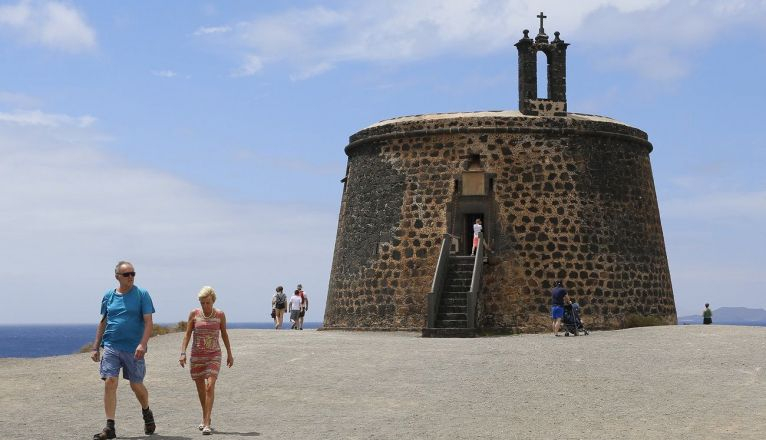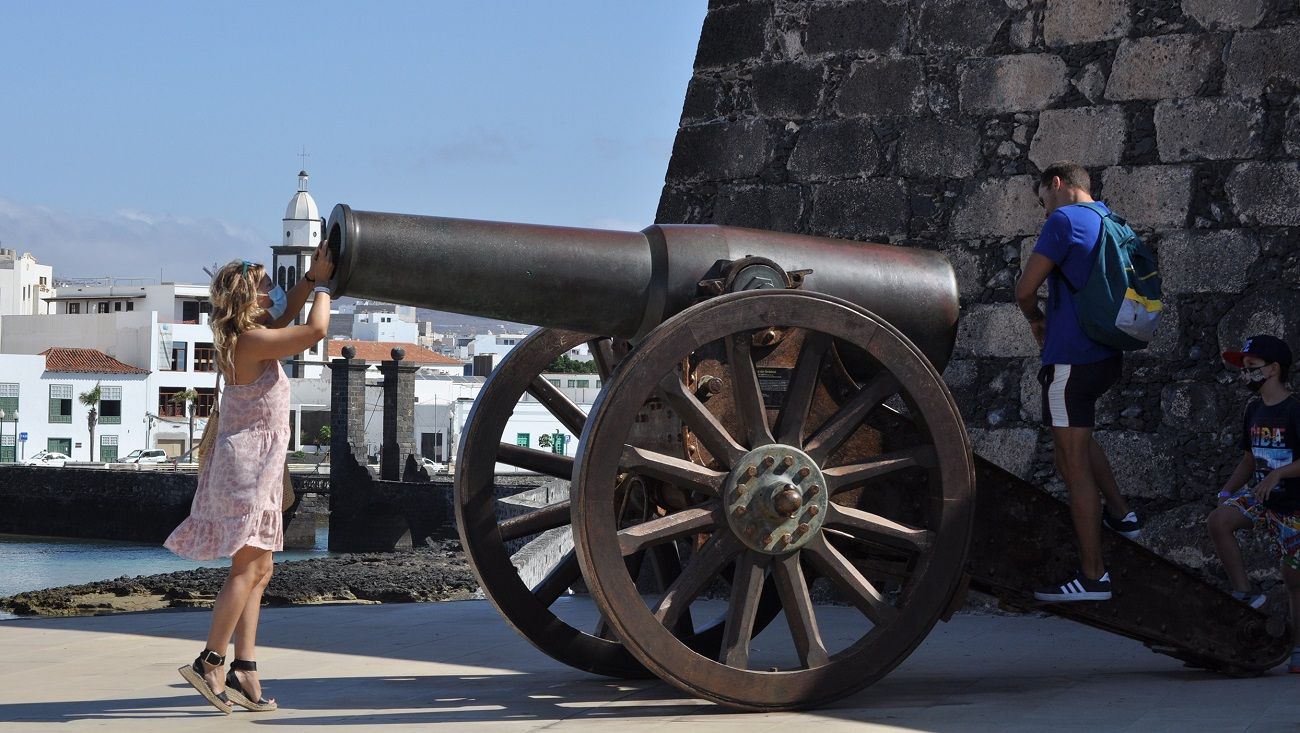There was a time of pirates and corsairs in Lanzarote. A time to defend against the enemy that arrived by sea. A time of building castles and fortresses to protect the island. Today, these buildings are preserved as traces of that past.
To get to know it, to get closer to the history of Lanzarote, there is no better way than visiting its castles. They all had a common origin, but a different evolution. Have you ever dreamed of eating in a castle?
Castle of San José
It was built between 1776 and 1779 by order of King Charles III of Spain, with the aim of protecting the port of Arrecife and providing work to the inhabitants of Lanzarote, who were suffering a period of hardship. The eruptions of Timanfaya had forced many people from Lanzarote to leave their villages, and the construction of this fortress served to employ a large part of the population, for which it became known "the Fortress of Hunger".
Two centuries later, the artist César Manrique set his sights on this castle, promoting the remodeling and conditioning works of the building. In 1976 it opened its doors as a museum, with the aim of “promoting, gathering and exhibiting the most significant works of modern artistic creation”.
The International Museum of Contemporary Art (MIAC) continues today fulfilling this purpose, within the network of Art, Culture and Tourism Centers. The internal structure of the building was maintained with little modification, with mysterious rooms and stone vaults and its drawbridge at the entrance, but an adjoining construction was also built where a restaurant is located, with an immense window overlooking the sea along the its entire facade.
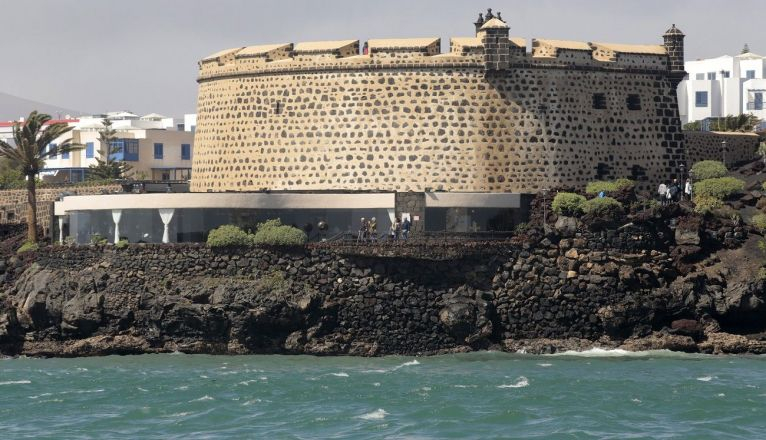
Castle of Guanapay
The Castle of Guanapay, also known as Castillo de Santa Bárbara, is the oldest in the Canary Islands, and it stands on the crater of the volcano that bears its name.
Its strategic location, next to Villa de Teguise, led Sancho de Herrera to order its construction in the 16th century, to monitor the coasts on both sides of the island. Later, in 1571, Gaspar de Salcedo added the two towers that complete the rhomboid shape of the fortress.
The castle was looted by pirates, and Argote de Molina decided to rebuild it in 1589. The improvement works continued later by order of King Philip II, shaping the current state that is preserved. Among other things, they built a new tower from where the view reached the sea.
The castle was also used as a refuge for the population and as a jail for prisoners, until in the 19th century, with the disappearance of pirate attacks, it lost its defensive value. Since then it was a military dovecote until 1899 and a century later the Ethnographic Museum of the Canarian Emigrant. It currently houses a Museum of Piracy, although since 2020 it has been closed for works.
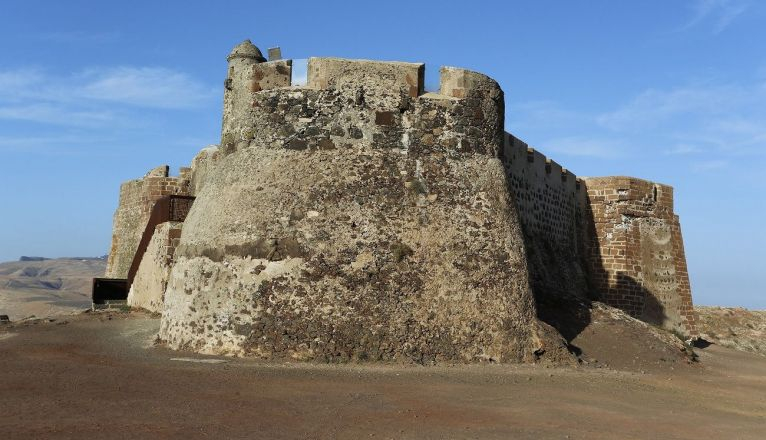
Castle of San Gabriel
In the heart of Arrecife, located on one of its islets, you will find this emblematic castle, whose current appearance dates back to the 18th century. Inside it houses the Arrecife History Museum, where pieces from the ancient culture of the aboriginal people of Lanzarote, the majos, are preserved, as well as documents and scale models on the evolution of the capital.
Also built to defend the island from pirate attacks, today it is a must see in Arrecife; and also one of its most characteristic sights, next to the Las Bolas bridge that gives access to the fortress.
In 1586 it was burned after the attack by the pirate Morato Arráez, although it was later rebuilt by order of King Fhilip II, introducing some of the changes that have been preserved to this day. One of them, another access bridge provided with six cannons.
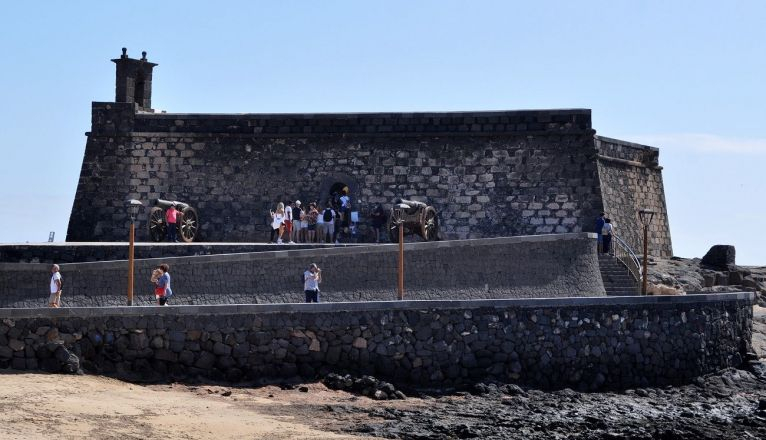
Castle of Las Coloradas
Also known as Torre del Águila, the castle of las Coloradas is the only defensive construction that was erected in the southern area of Lanzarote, and also one of the best examples of military architecture in the Canary archipelago.
Built in 1741 to defend the island from the corsair attacks that devastated the area, it had to be renovated in 1769, when it was destroyed by a fire caused by Algerian troops.
The building is circular in shape and a drawbridge closes its access. Inside, it housed a dormitory for the troops, three rooms, a store for gunpowder, a dungeon and two cisterns.
That part cannot currently be visited, although there are plans to open it to the public by housing a museum.
